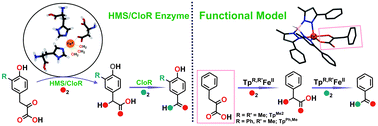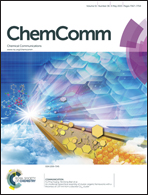Dioxygen activation and two consecutive oxidative decarboxylations of phenylpyruvate by nonheme iron(ii) complexes: functional models of hydroxymandelate synthase (HMS) and CloR†
Abstract
Two mononuclear iron(II)–phenylpyruvate complexes of monoanionic facial N3 ligands are reported to react with dioxygen to undergo two consecutive oxidative decarboxylation steps via an iron–mandelate complex mimicking the function of HMS and CloR.


 Please wait while we load your content...
Please wait while we load your content...